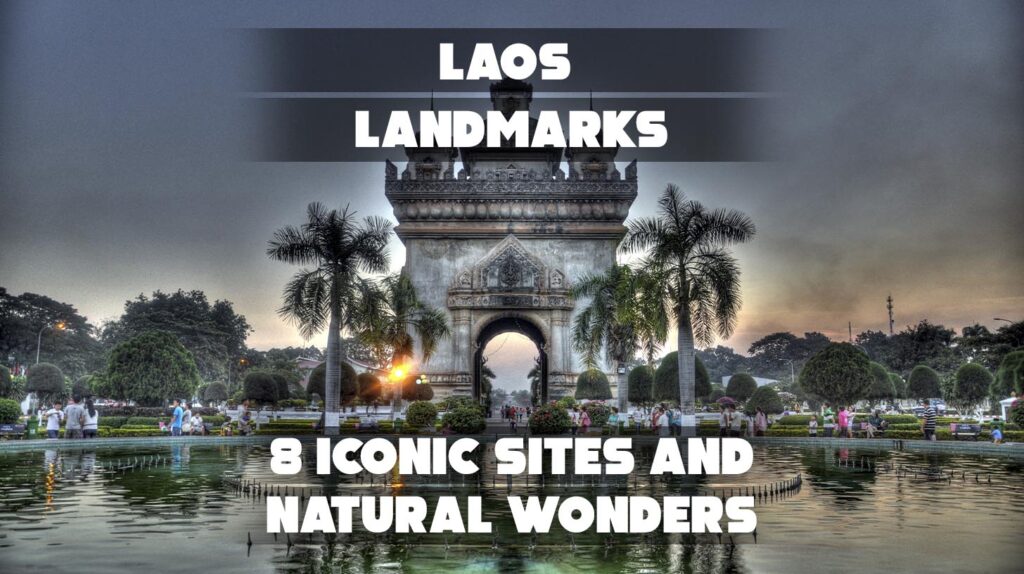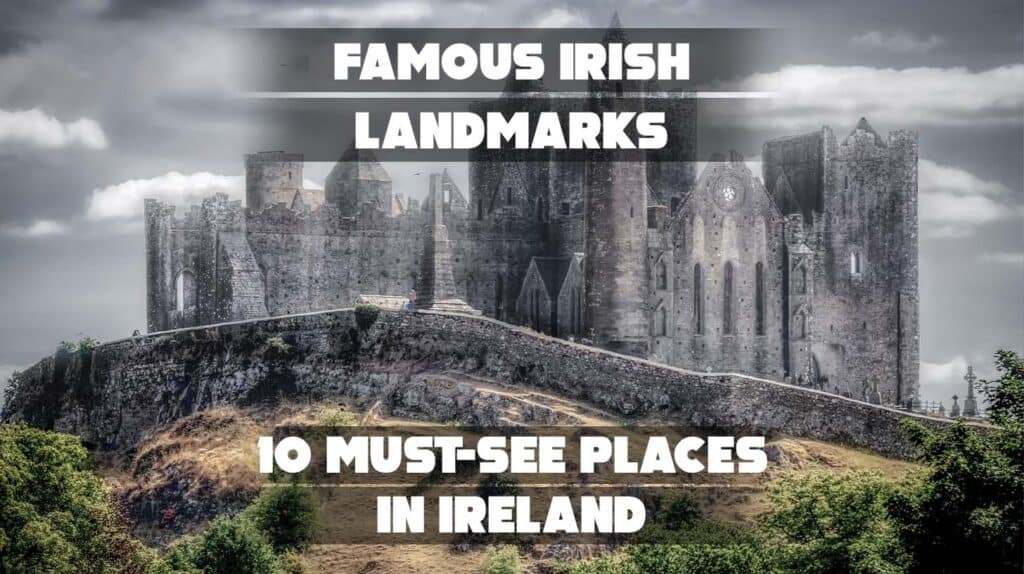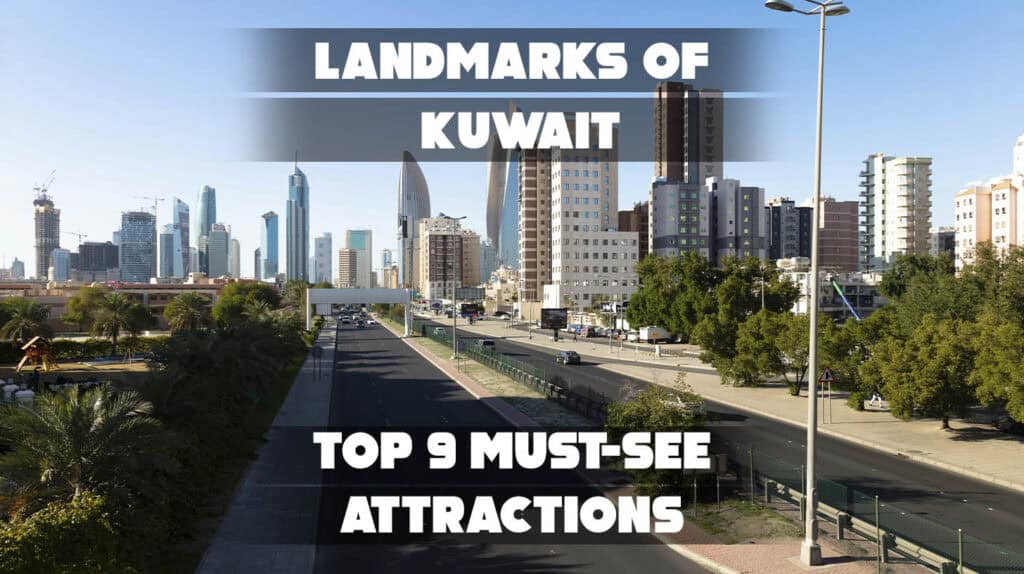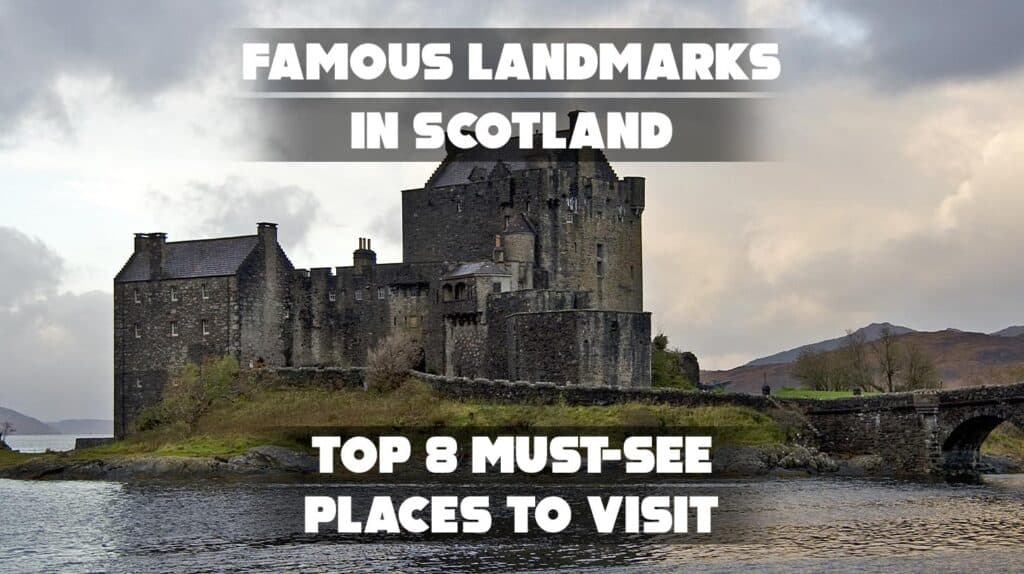What makes Budapest unforgettable? Is it the views from Castle Hill, the iconic Great Synagogue, or the stunning bridges and parks?
As a traveler, you’re not just seeking beautiful sights but a connection to the spirit of a city. Budapest’s landmarks, from historic house facades to world-class museums, offer a unique blend of history and modernity that define the city’s soul.
At Landmarks Architects, we help you discover the famous Budapest landmarks that tell the city’s story.
In this article, explore:
- Top must-see Budapest landmarks
- Historic sites showcasing Hungarian culture
- Modern landmarks reflecting the city’s evolution
Let’s dive in and explore why Budapest stands out as one of Europe’s most fascinating destinations.
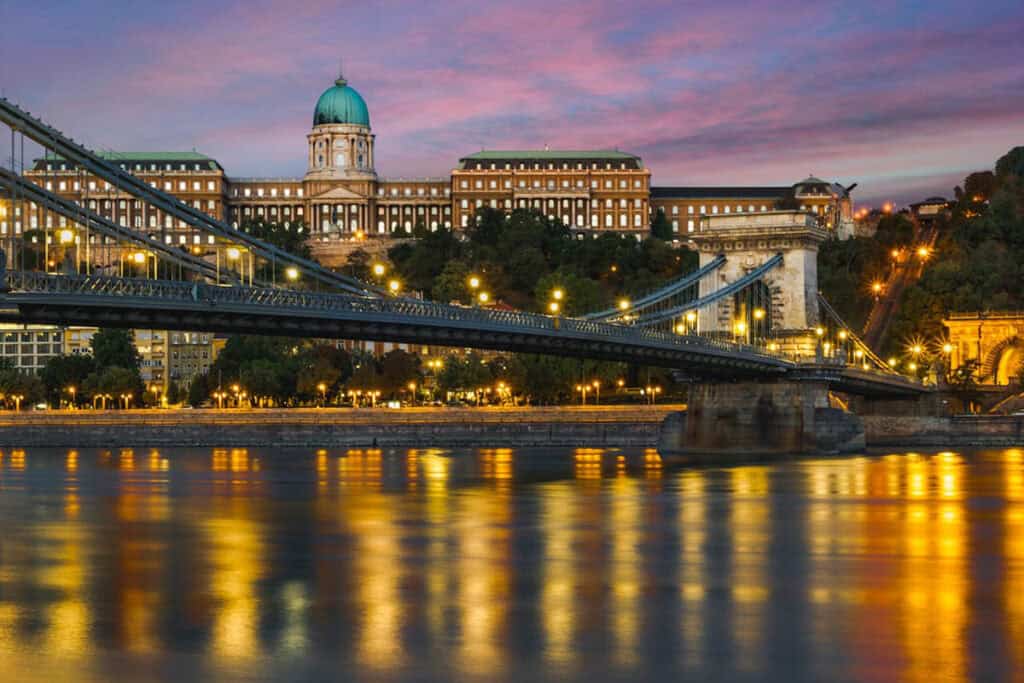
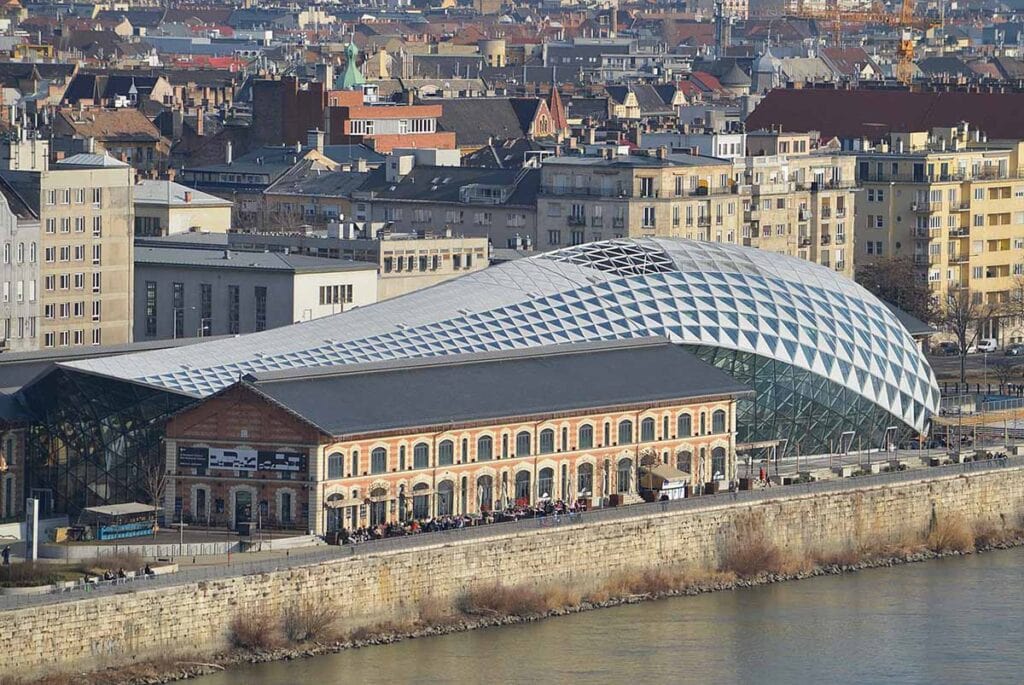
Top 3 Most Famous Budapest Landmarks

Budapest is home to many famous landmarks. These landmarks show unique Hungarian architecture. They reflect the deep cultural heritage of Hungary. Many of the famous Budapest landmarks sit by the Danube River. Visitors can enjoy stunning views of the city.
The city center has many historic sites. Whether it’s your first time in Budapest or you’re returning, the city will always impress.
1. Hungarian Parliament Building
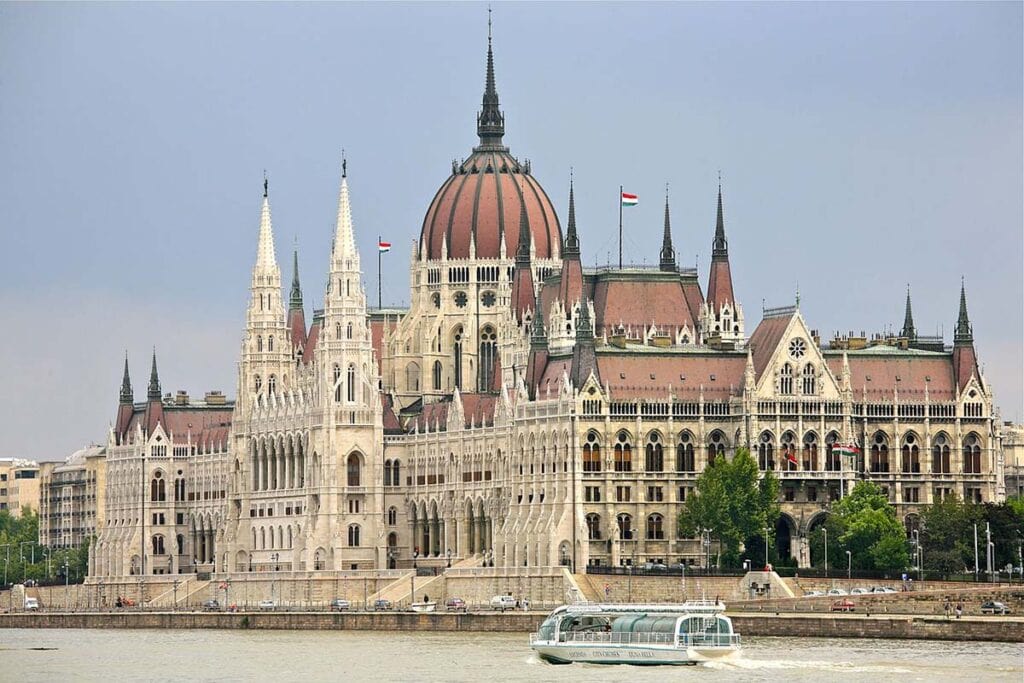
The Hungarian Parliament Building is one of the most famous Budapest landmarks. It sits along the Danube promenade and shows grand Gothic Revival style. Its decorated facade and tall dome stand out in the city.
This building is home to the Hungarian National Assembly. It is a strong symbol of national pride and Hungarian architecture.
Visitors come to see the Crown Jewels and explore the grand halls. Guided tours make it one of the top Budapest attractions. The Parliament faces the Danube River. People can see it from both Buda and Pest. It adds beauty to the skyline and shows Hungary’s rich history in the Carpathian Basin.
2. Buda Castle
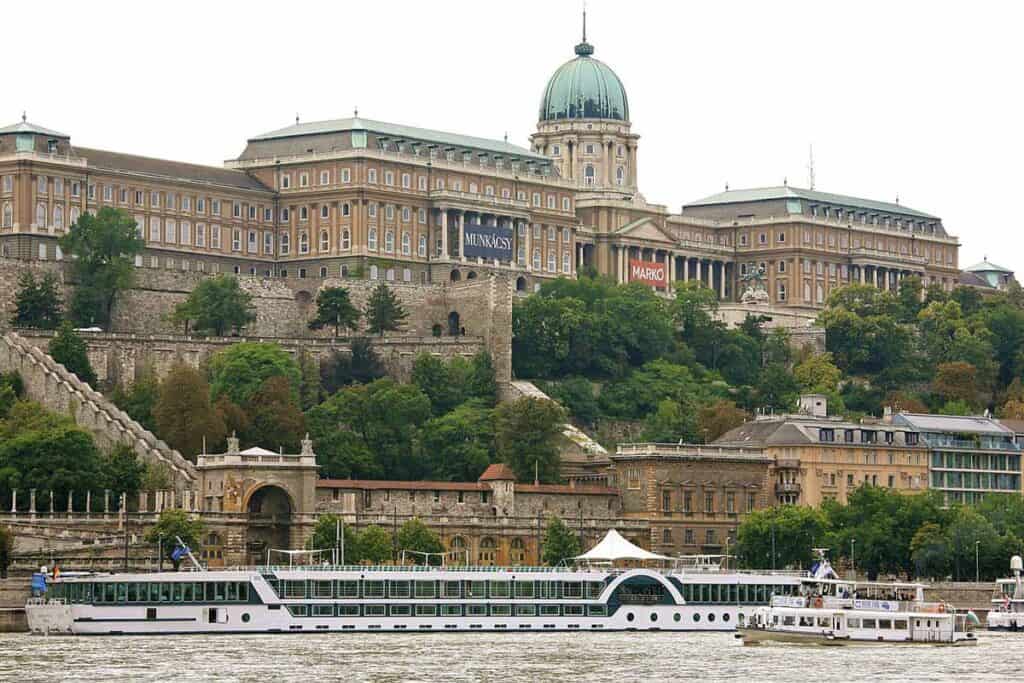
Buda Castle, also called the Royal Palace, sits on Castle Hill in the Castle District. It overlooks the Danube River. This famous Budapest landmark has a long history as a medieval fortress. Later, it was rebuilt into a grand palace. It now houses the Hungarian National Gallery and the Budapest History Museum.
Visitors explore the castle grounds for stunning views of Budapest. From here, you can see the Chain Bridge and the Pest side. The castle mixes types of architectural styles from medieval to baroque periods.
Buda Castle is a museum and cultural center. It is a must-visit for those interested in Hungarian art and history. The Castle District also has historic houses and charming streets, making it one of the top Budapest landmarks.
3. Széchenyi Chain Bridge
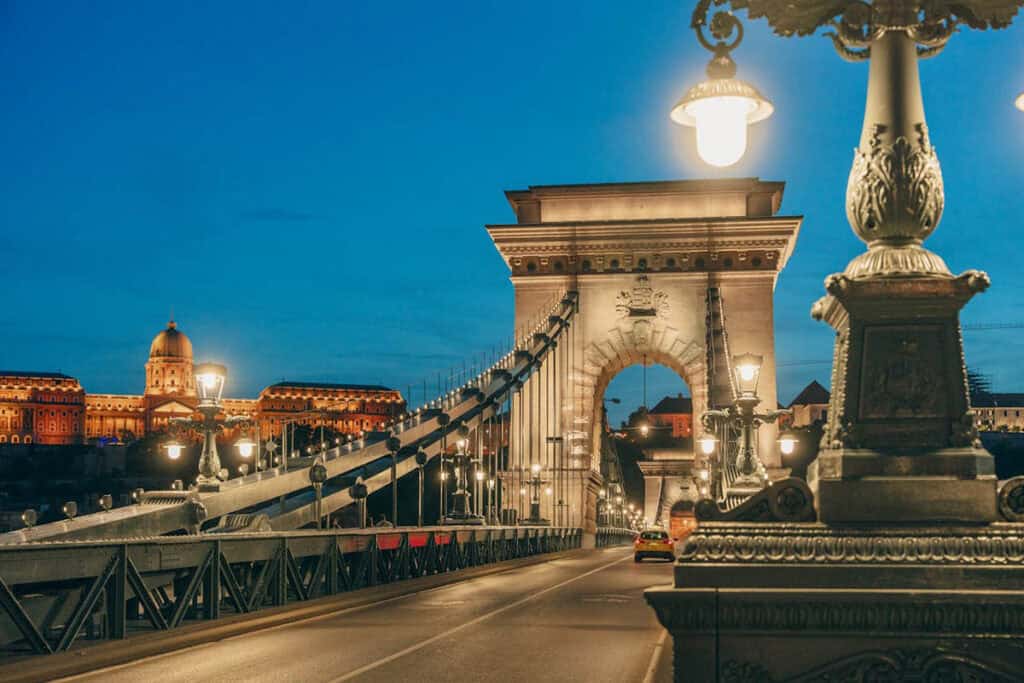
The Széchenyi Chain Bridge is Budapest’s first permanent bridge across the Danube. It connects the Buda and Pest sides of the city. As one of the most famous Budapest landmarks, it is an engineering marvel from the 19th century. The bridge has large stone lions at both ends, symbolizing strength and protection.
This suspension bridge is vital for Budapest’s transportation and tourism. It links central parts of Buda and Pest and provides easy access to nearby areas such as Erzsébet tér. Locals and tourists often walk across the bridge for panoramic views of the Danube, Buda Castle, and the city’s skyline.
The Chain Bridge is more than a bridge—it’s a historic symbol of Budapest’s growth and connection. It’s featured in many photos and guides on Hungary’s landmarks, making it a top Budapest landmark to visit.
Historical Budapest Landmarks
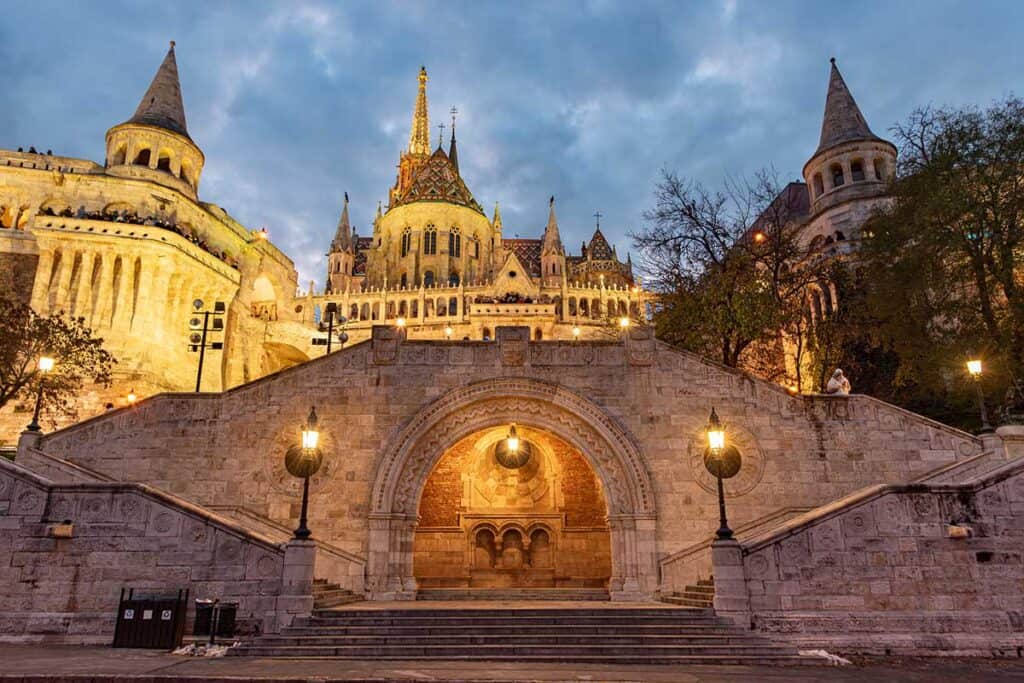
Budapest is home to several important historical landmarks that reflect its rich past and unique Hungarian architecture. These famous Budapest landmarks offer valuable insights into the city’s medieval and 19th-century history.
They showcase ornate, beautiful buildings, monuments, and cultural treasures along the Danube promenade.
4. Matthias Church
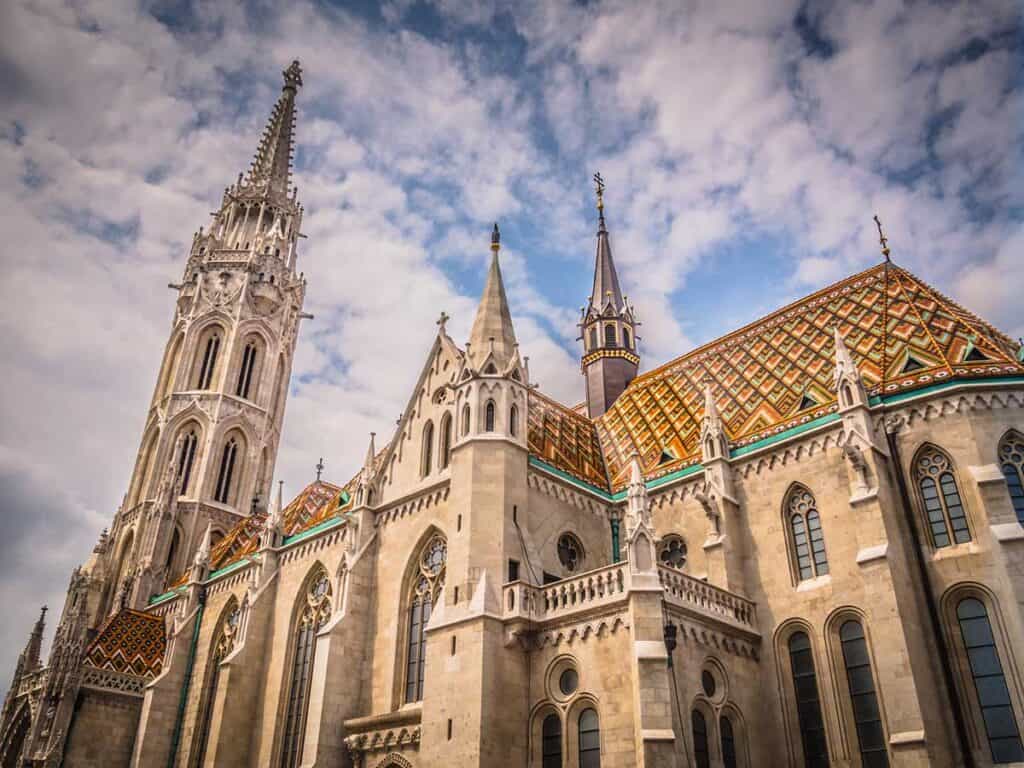
Matthias Church stands in the Buda Castle District near Fisherman’s Bastion. The church was originally built in Romanesque style in 11th century, with its Gothic structure mostly completed in the 14th century. It is famous for its colorful Zsolnay roof tiles and beautifully detailed interior.
In the 19th century, the church was rebuilt in a Neo-Gothic style, blending medieval charm with new design elements. The church is named after King Matthias Corvinus, who transformed its southern tower. It later served as a coronation site for Hungarian kings.
The church is a popular Budapest landmark, drawing visitors interested in history, religion, and Hungarian architecture. It also houses art pieces and serves as a museum, offering a glimpse into Budapest’s cultural heritage.
5. Great Synagogue (Dohány Street Synagogue)
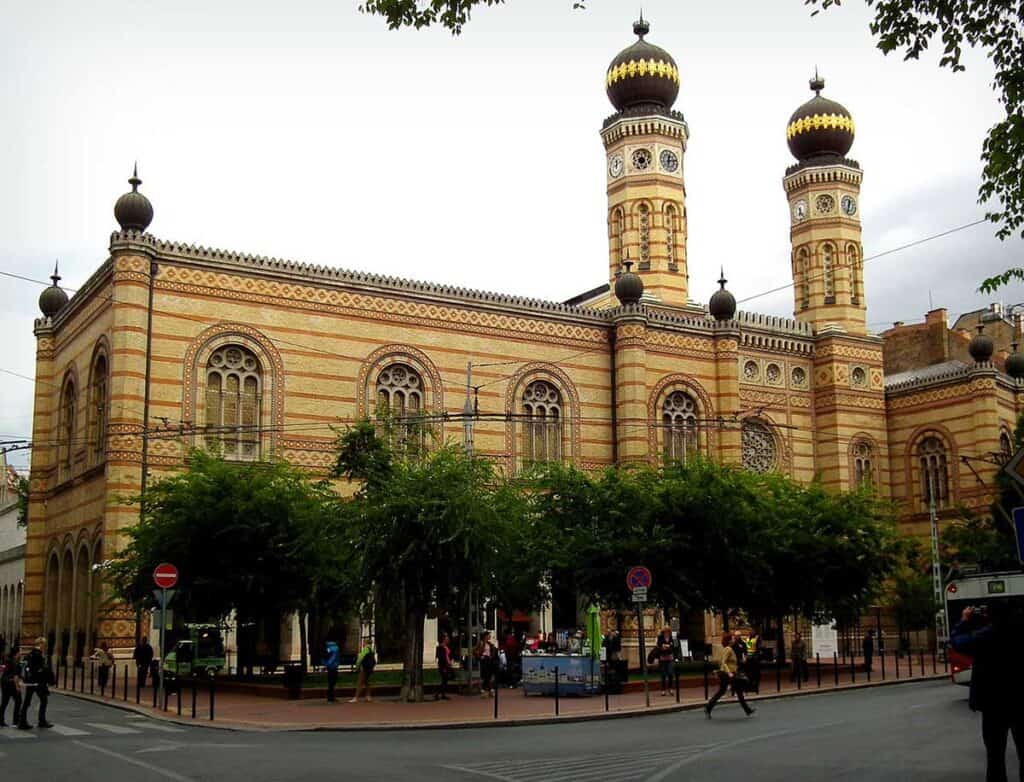
The Great Synagogue in Budapest is the largest synagogue in Europe and the second-largest in the world. Located in the historic Jewish Quarter, it is a prominent landmark in Budapest. Built in the mid-19th century, this structure features Moorish Revival architecture, with grand domes and intricate details, making it one of the famous Budapest landmarks.
Inside, the synagogue is a place of worship. It also houses the Jewish Museum, offering insight into Hungary’s Jewish heritage. The synagogue’s courtyard includes the Holocaust Memorial, honoring those lost during World War II.
The Great Synagogue stands as a symbol of Budapest’s rich cultural and religious history. It is an essential stop for anyone exploring landmarks in Budapest and learning about the city’s history.
6. Fisherman’s Bastion
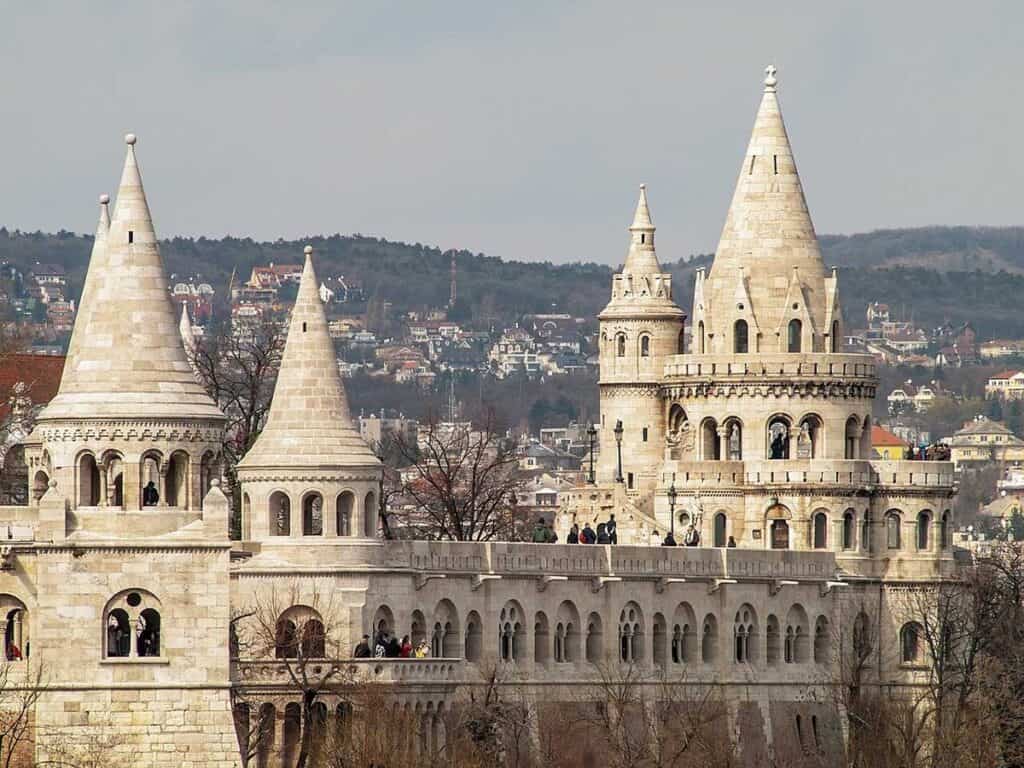
Fisherman’s Bastion is a fortress next to Matthias Church. It is known for its fairytale-like towers and views of the Danube and Pest. Built in the late 19th century, it was designed to look like medieval walls but served as a decorative lookout.
Its seven towers represent the seven tribal leaders who founded Hungary. The Bastion’s terraces offer views of famous landmarks like the Parliament Building and St. Stephen’s Basilica.
As one of Budapest’s historical monuments, this site is popular for its history and beautiful views. It combines Hungarian heritage with city park leisure and is a must-see famous Budapest landmark.
7. Heroes’ Square
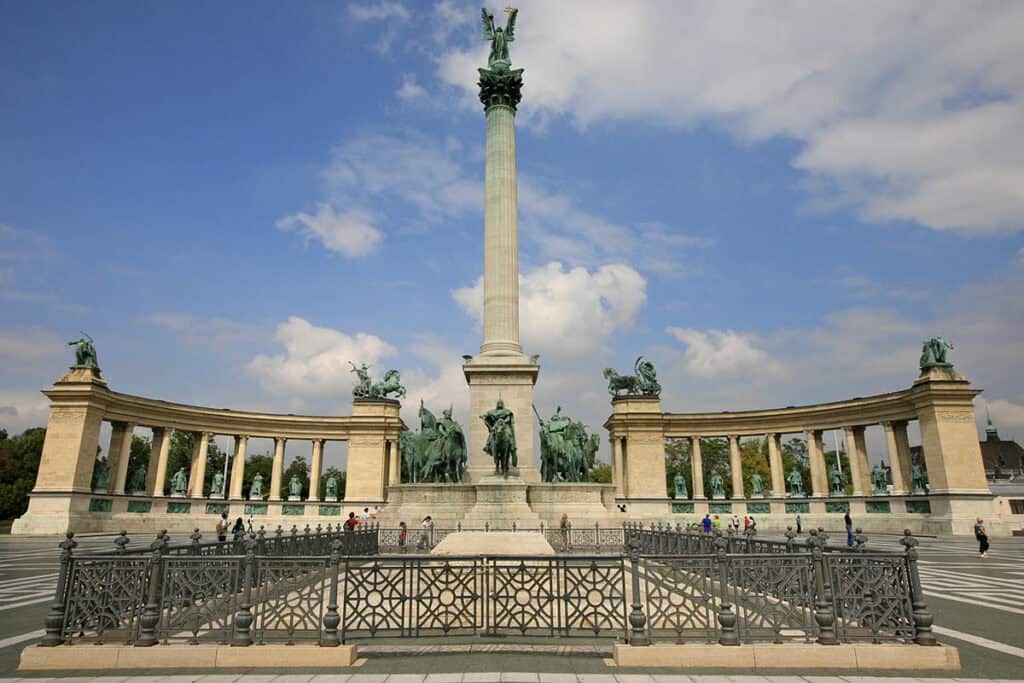
Heroes’ Square is one of the largest and most important squares in Budapest, located at the end of Andrássy Avenue near City Park. It was built in the late 19th century to mark Hungary’s one thousandth anniversary and features the Millenary Monument.
The square displays statues of Hungarian kings, national leaders, and important historical figures, arranged around a central column topped by Archangel Gabriel. The site often hosts national events and is close to museums like the Museum of Fine Arts.
It provides insight into Hungary’s history within the Carpathian Basin and reflects national pride with its impressive monuments. Heroes’ Square remains a key historic site and a popular part of Budapest’s cultural landscape.
8. Hungarian State Opera House
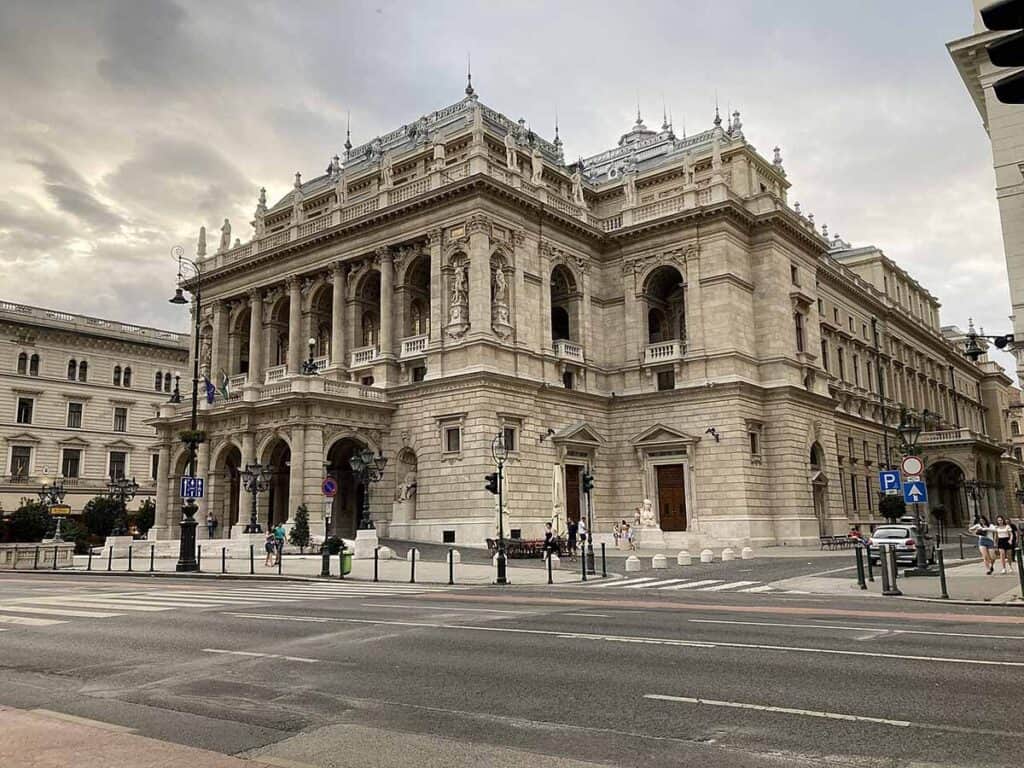
The Hungarian State Opera House is a key landmark in Budapest, located on Andrássy Avenue. This Neo-Renaissance building opened in 1884 and is known for its stunning architecture and beautiful interiors. It features fine arts like frescoes, sculptures, and grand staircases.
With seating for over 1,200 people, the opera house hosts operas, ballets, and concerts. Visitors enjoy guided tours that explain the history and artistic details. It remains a symbol of Budapest’s cultural life and a must-see attraction for those interested in music and historic buildings.
Modern-Era Landmarks in Budapest
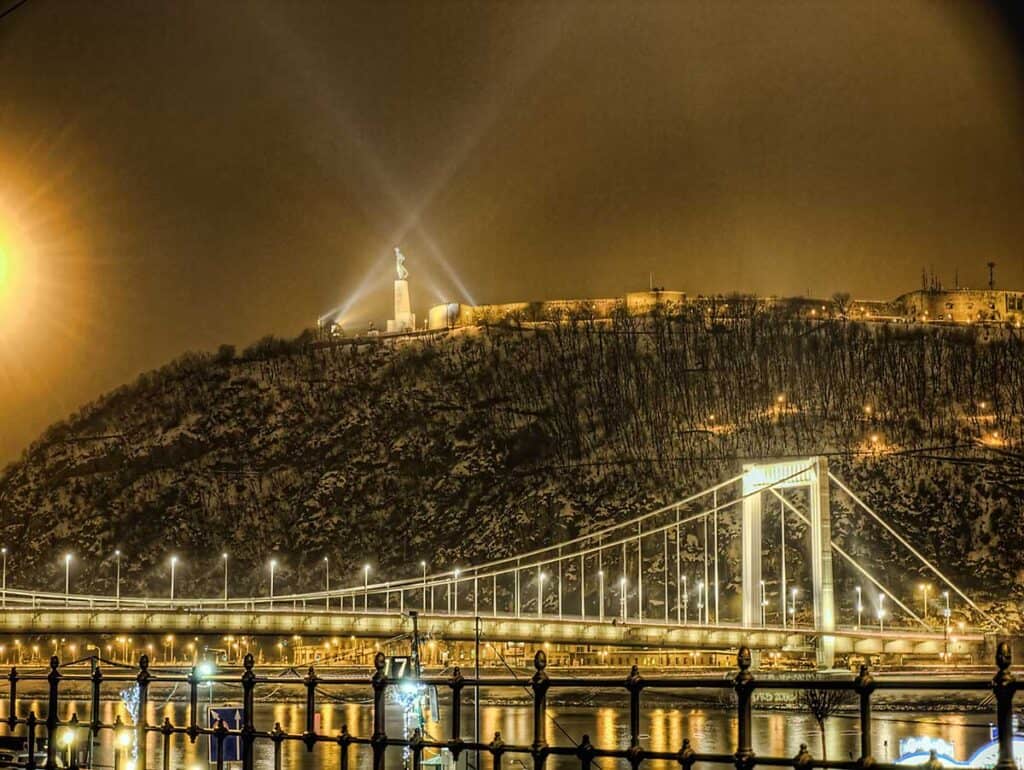
Budapest’s modern landmarks show how the city has changed. These sites mix old styles with new ideas. They reflect Budapest’s shift from history to modern life. From the lively Great Market Hall to the bold design of the Budapest Whale, these landmarks blend tradition with innovation.
The Liberty Statue stands as a symbol of freedom. These landmarks show the city’s vibrant present and cultural evolution.
See Also Romania Landmarks
9. Great Market Hall
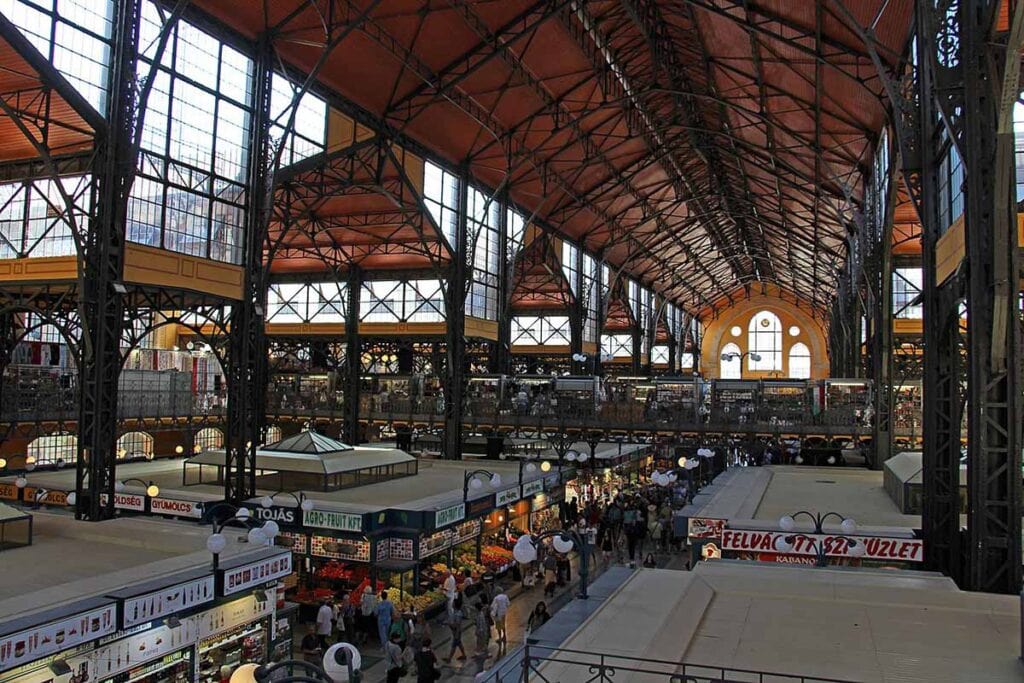
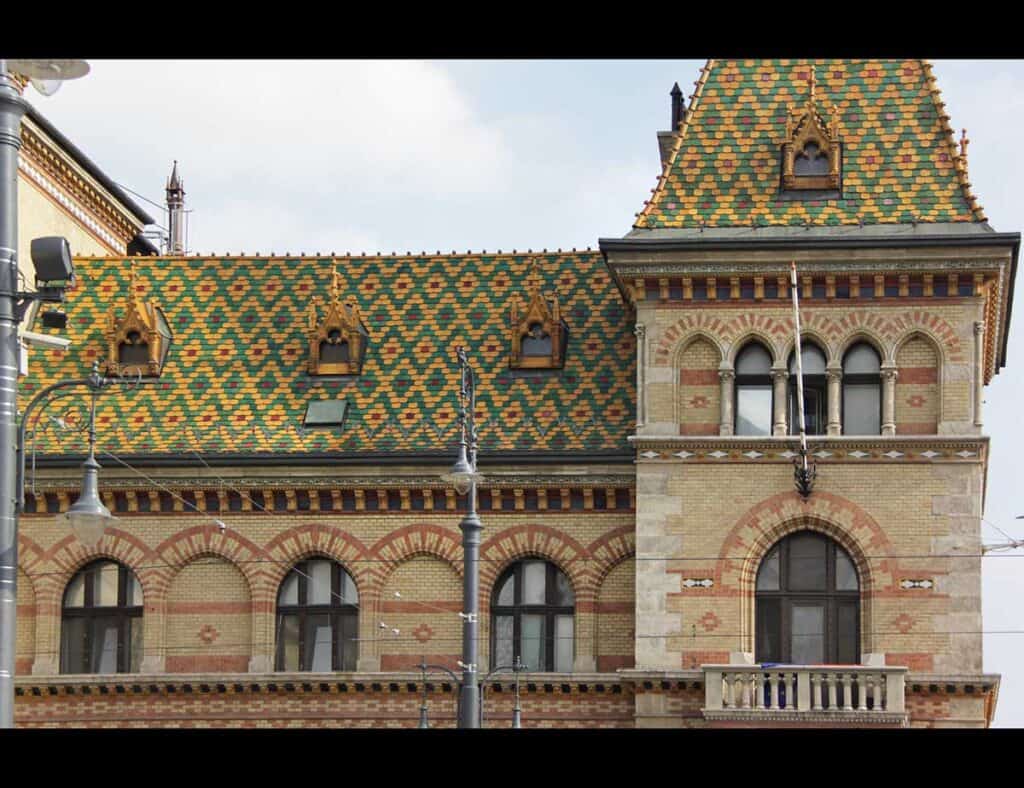
The Great Market Hall sits near the famous Váci Utca shopping street. It is one of Budapest’s busiest marketplaces. This market is the largest and oldest indoor market in the city. It is known for its Neo-Gothic architecture with Art Nouveau elements. The steel structure and wide interior were modern for its time.
As one of the famous Budapest landmarks, it offers fresh local produce, meats, spices, and Hungarian foods. Tourists enjoy exploring stalls for paprika, embroidered linens, and handmade souvenirs. The market also has cafes where visitors can try local dishes.
Its lively atmosphere makes it a top stop for locals and tourists. Many come to enjoy Budapest’s sights and landmarks in Budapest.
10. Budapest Whale
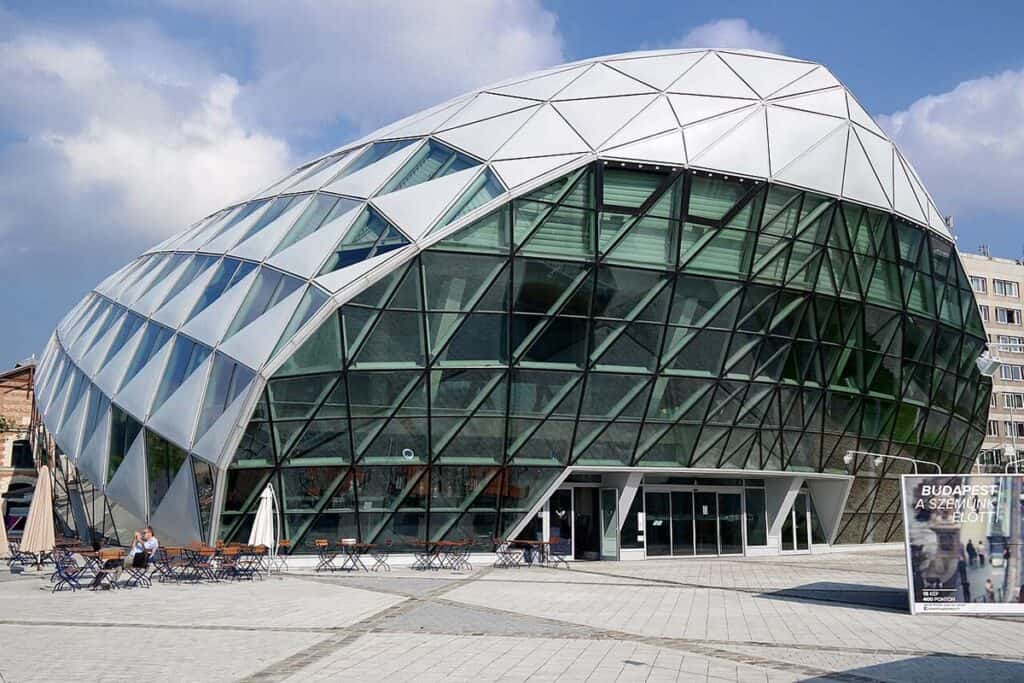
The Budapest Whale is a modern riverside building between Liberty Bridge and Petőfi Bridge. Its glass and steel design looks like a whale, giving it a futuristic feel. The building blends parts of an old warehouse with bold, modern design.
Inside, you’ll find art galleries, stylish shops, and cozy cafés. The large glass roof lets in natural light, making the space bright and open. Visitors can relax on terraces with views of the Danube or walk along the riverside.
The Budapest Whale is one of the modern Budapest landmarks, showcasing the city’s new wave of architecture. It blends culture, design, and lifestyle, making it a great place to explore the city’s contemporary side.
11. Liberty Statue
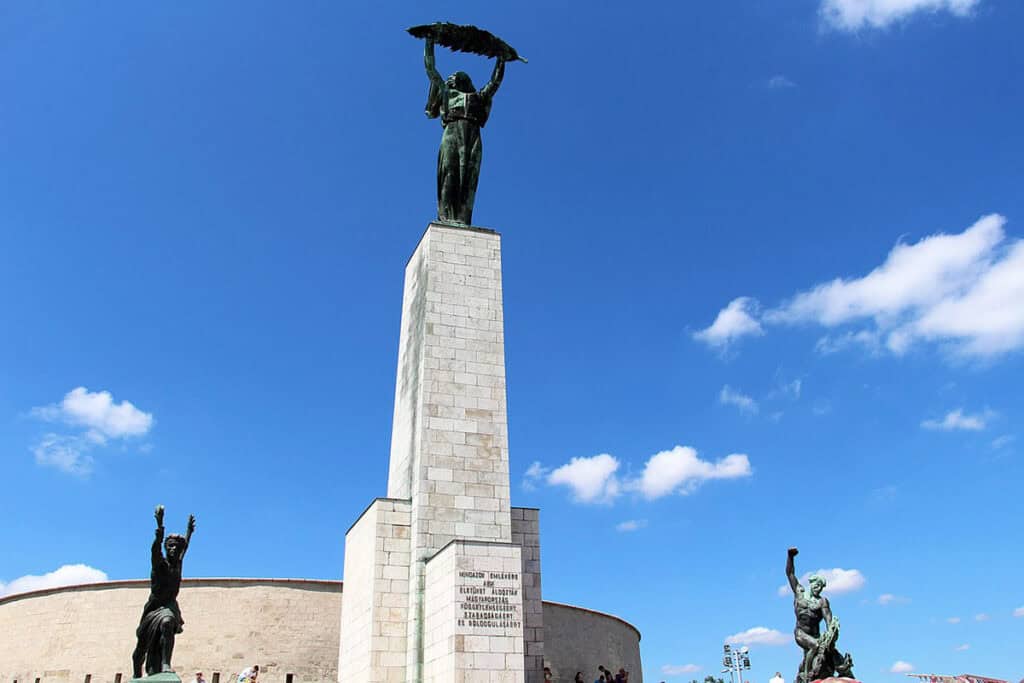
The Liberty Statue, also called the Liberty Monument, stands on top of Gellért Hill. It holds a large palm leaf that stands for freedom. The statue was built in 1947 to honor Soviet troops. After 1989, it came to celebrate Hungary’s independence. It now honors those who died in Hungary’s 20th-century struggles.
The statue is one of the most famous Budapest landmarks. It mixes deep history with stunning views.
From the top of the hill, you can see the Parliament Building, Buda Castle, and the Danube River. These are some of the best views in the city. Close by are the Gellért Baths and the Citadel. This area is a top spot for sightseeing and learning about Hungary’s past. The Liberty Statue remains a strong symbol of freedom.
Budapest Landmarks: A Recap
Famous Budapest landmarks, from the Royal Palace in the Castle District to the striking Freedom Bridge, showcase a city rich in history. Explore Castle Hill, the Hungarian National Gallery, and Memento Park to experience the past.
From museum treasures to grand house facades, landmarks in Budapest blend culture and beauty. Whether strolling through a Budapest park or visiting a famous landmark, the city leaves a lasting impression.
The city’s evolution is reflected in its mix of ancient structures and modern marvels like the Budapest Whale, making it a dynamic destination that celebrates both history and innovation.



